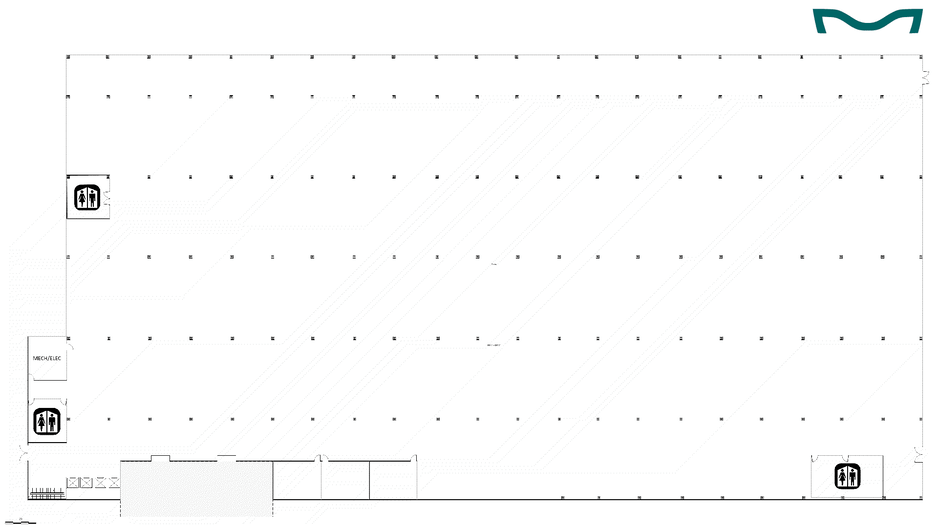What is Warehouse Logistics?
Warehouse logistics is the process of planning, operating and managing the flow of goods within a warehouse to meet business objectives.
Comparing Warehouse Logistics and Supply Chain Logistics
Warehouse logistics is a subset of supply chain logistics. Supply chain logistics looks at everything from extraction of raw materials through transportation, manufacturer of finished goods and ultimate delivery to customers. There can be several warehouses embedded in a single supply chain process.
In this blog, we will look at warehouse logistics from the standpoint of supporting your business needs. No logistics process exists for its own sake. We design and implement logistics systems including warehousing to achieve specific ends for our clients and customers. More on that below when we talk about the connection between warehousing and your business objectives.
What Are the Key Aspects of Warehouse Logistics?
Warehouse logistics has four main components:
- The physical layout of the warehouse
- The material handling equipment that helps move, store, and pick the product
- The warehouse personnel and the information management system.
An information management system plays a critical role in warehouse logistics. It determines where materials are stored, under what conditions, when they are retrieved, and where they are staged for assembly or issue.
There are two common terms for these systems:
A Warehouse Execution System (WES) focuses on operational tasks. It tracks incoming goods, decides where to store them, and tells staff where to retrieve items for fulfillment.
A Warehouse Management System (WMS) offers broader functionality. It includes everything a WES does and also manages inventory levels, reorder points, and disposal timelines.
Today, the differences between WES and WMS have largely faded. The two terms are often used interchangeably depending on the system’s scope.
How Does Warehouse Logistics Support the Broader Business Objectives?
The science of Operations Research is an integral skill at Maveneer—one we use to align warehouse logistics with broader business objectives. Figure 1 illustrates how typical warehouse measures map to business goals. While improvements in speed, accuracy, and inventory control are valuable on their own, they also serve a larger purpose. As the animation shows, these operational enhancements directly support business outcomes like customer satisfaction, efficiency, and growth.

The key is to understand the relationship between your warehouse operations and the overall business goal and prioritize your warehouse enhancements to best support the business objectives.
Now we know what we want to accomplish and why. The next question is how do you go about ensuring your warehouse is operating at peak efficiency?
Planning for Success
"If you do not plan for success then you are planning for failure." This adage highlights that appropriate planning based on data and engineering math and science are critical for achieving your warehousing goals.
The physical layout of the warehouse is a key factor in smooth operations. There are five operational areas in a warehouse. Please see figure 2 (below).
- Loading/Unloading: Loading/unloading is the area where stock is offloaded for processing and storage in the warehouse. These areas should be large enough to allow your Material Handling Equipment (MHE) such as forklifts, pallet jacks, etc. to move safely and efficiently. Congestion is your enemy in warehouse logistics.
- Reception: Reception is the location where bulk packing is broken down, material coming into the warehouse is inspected for accountability and condition verification, and the inventory is added into the warehouse stock. This is often the first place in the process that material is internally tagged whether that is a barcode sticker or a radio-tag. If possible, reception should be close to the unloading point.
- Storage: Generally, the largest area in a warehouse is storage. This is where your material is held until issued. There can be multiple types of storage in a single facility. You might have refrigeration areas. There might be bins to hold small parts. You might have pallet stacks where large, but light items are stored. There are thousands of configurations and storage container types.
- Picking Area: The picking area is where items being taken out of storage for issue are assembled, inspected, and potentially pre-packed.
- Shipping: The final area is shipping where orders are put into containers and labelled for transportation to down-stream users whether that is a customer or a manufacturing facility. It saves time and decreases inventory loss if you can locate the shipping area close to the loading location.

Critical Processes
There are four three processes involved in warehousing: receiving, storage, and issuing, and quality control. There have been hundreds of books written on each one of these topics. While they sound simple in theory, in practice there are many nuances and interactions between the process categories.
Receiving
Quality warehouse logistics start with an efficient receiving process, which begins even before the materials arrive. This upstream, pre-receipt phase ensures that incoming items are properly labeled, accurately documented, safely packaged for warehouse staff, and inspected for any damage or quality issues upon arrival.
Storing
Intentional storing is critical in warehouse logistics. Material can be stored in a warehouse for varying periods of time. The location where your stock is stored has a substantial impact on the efficiency of your operations. Time is money in business, and space is money in a warehouse. You want to maximize your storage density, but you want to leave enough room to allow for storing and picking without too much congestion. To support faster fulfillment, high-turnover inventory should be positioned near the picking area for quicker access.
Issuing
There are several subsets to the issuing process including picking, packing, and shipping. This is often the area where you can save the most time and money through effective design.
Quality Control
This is an umbrella process that works in parallel with the other operations in warehouse logistics. The industrial engineer says, "what is not inspected is neglected." Even in well-run, well-designed facilities it is important to do periodic and random checks on the subsystems. Periodic inventories of locations help verify location accuracy and material condition. Random checks of packages help promote order accuracy and identify systemic issues before they become business problems. Personnel should receive regular refresher training. When new equipment or automation is introduced, it's essential to ensure employees understand how to operate the technology and how it affects overall warehouse logistics operations.
What's Next?
Optimizing warehouse logistics requires more than just the right tools; it demands a clear connection between your operational decisions and business goals. From storage strategies to fulfillment processes, each step plays a critical role in overall performance.
If you're ready to identify opportunities for improvement in your warehouse logistics and operations, contact Maveneer for an Operational Assessment and take the next step toward a more efficient, scalable logistics strategy.
You may also like
These related articles
